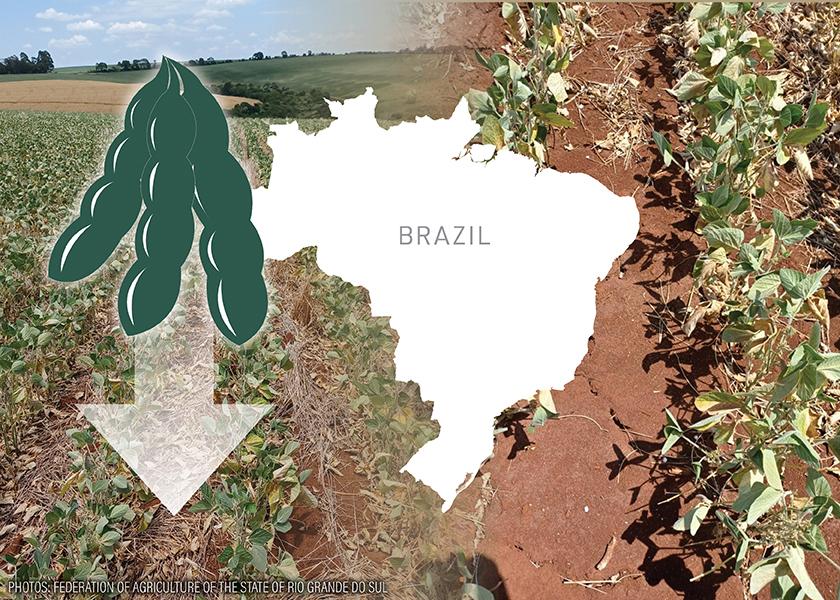USDA Drops Global Soybean Production by 10 MMT

In the March World Agricultural Supply and Demand Estimates (WASDE) report, USDA made a deeper cut than expected to global soybean production.
USDA lowered Brazil’s soybean crop to 7 million metric tons (MMT) to 127 MMT.
“The trade was expecting a 5 MMT reduction in Brazil, yet USDA went down by 7 MMT,” says Ben Brown, a research associate with University of Missouri Extension and the Food and Agricultural Policy Research Institute (FAPRI-MU). “That was a big reduction for USDA, and it will be supportive for the soybean market.”
Other changes in South America soybean production included:
- Lowering Argentina’s soybean crop by 1.5 MMT to 43.5 MMT
- Lowering Paraguay soybean crop by 1 MMT 5.3 MMT
- Lowering Uruguay’s soybean crop by 0.6 MMT to 2.0 MMT
USDA raised soybean exports by 40 million bushels to 2.09 billion due to the lower production and reduced exports from South America.
For global corn production, USDA made a 1 MMT cut to Argentina’s crop, yet left the Brazilian corn crop unchanged at 114 MMT. Global corn production is forecast modestly higher with increases for India and Russia that are partly offset by declines for Argentina and South Africa.
Of note, Brown says, is USDA increased corn used for ethanol by 25 million bushels to 5.350 billion.
“We’ll need to watch this as ethanol consumption and demand is function of how much we’re driving,” he says. “We’ll likely see less demand for gasoline as prices move higher.”
The global wheat outlook is calling for higher production, decreased trade and consumption and larger ending stocks. This is mostly due to a larger wheat crop in Australia, which was calls for a jump of 2.3 million tons to a record 36.3 million.
“Global wheat ending stocks were increased 2MMT,” Brown says. “That’s because the production isn’t gone in Ukraine or Russia, for example, it’s just not leaving the country.”
As a result, he says, the majority of the demand will shift to Australia and India.







